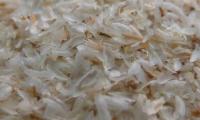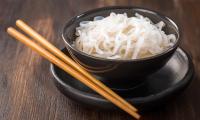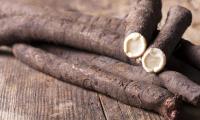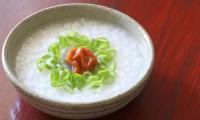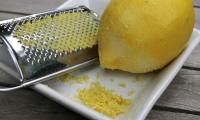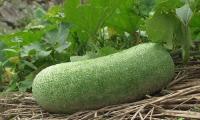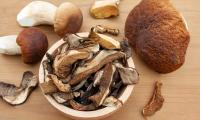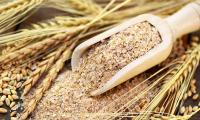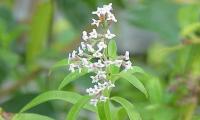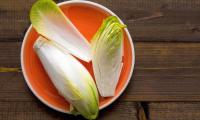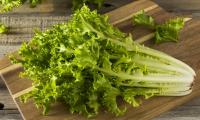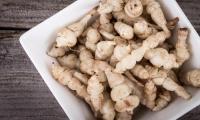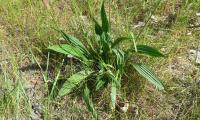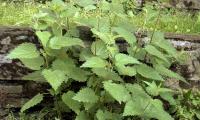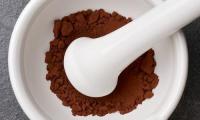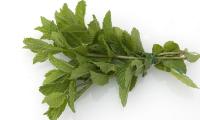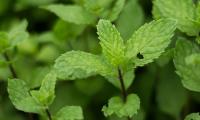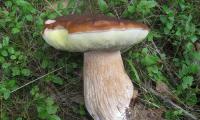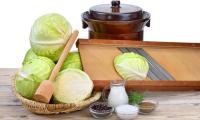The best perspective for your health
The best perspective for your health
The best perspective for your health
The best perspective for your health
Showing 1-20 of 533 items.
-
41 kcal
-
Water 7%
-
98/01/00
-
Ω-6 (LA) 0.03 g
-
Ω-3 (ALA) 0.10 g
Psyllium husks (organic) are used raw to thicken and bind (e.g. sauces, puddings, etc.). They are very rich in fiber and aid digestion.
-
10 kcal
-
-
100/00/00
-
Ω-6 (LA) 0 g
-
Ω-3 (ALA) 0 g
Shirataki noodles (konnyaku glass noodles) made from konjac roots have hardly any usable carbohydrates. They are gluten-free, low in calories and filling. Organ
-
54 kcal
-
Water 74%
-
92/06/02
-
Ω-6 (LA) 0.14 g
-
Ω-3 (ALA) 0.10 g
The real garden black salsify (winter asparagus, comfrey, raw) can be a healthy delicacy if you know how to peel and prepare it. Organic?
-
34 kcal
-
Water 70%
-
88/09/02
-
Ω-6 (LA) 0.04 g
-
Ω-3 (ALA) 0.01 g
Umeboshi paste (Neriume, Bainiku), made from ume fruit, has a very salty taste and a fruity-sour note.
-
47 kcal
-
Water 82%
-
90/08/02
-
Ω-6 (LA) 0.06 g
-
Ω-3 (ALA) 0.03 g
Lemon peels have a delicious aroma when raw. Here are a few lemon peel recipes. Only use the peel of untreated citrus fruits (organic)!
-
13 kcal
-
Water 96%
-
83/11/06
-
Ω-6 (LA) 0.09 g
-
Ω-3 (ALA) 0 g
The wax gourd, also known as winter melon, is grown mainly in Asia and Florida. It is used raw as a vegetable (organic?) or, for example, as winter melon soup.
-
247 kcal
-
Water 11%
-
94/05/01
-
Ω-6 (LA) 0.04 g
-
Ω-3 (ALA) 0.01 g
The cinnamon stick (cinnamon stick, raw) tastes aromatic and sweet thanks to its essential oils. See also cinnamon, ground and organic quality.
-
269 kcal
-
Water 1%
-
64/32/03
-
Ω-6 (LA) 0.34 g
-
Ω-3 (ALA) 1.4 g
The porcini mushroom is one of the most popular edible mushrooms. In dried form (raw?) the taste is much more intense. Organic?
-
216 kcal
-
Water 10%
-
77/18/05
-
Ω-6 (LA) 2.0 g
-
Ω-3 (ALA) 0.17 g
Wheat bran (raw) remains as a byproduct of flour production. Bran (organic?) is rich in nutrients and supports the intestines in case of digestive problems.
-
235 kcal
-
Water 16%
-
58/38/04
-
Ω-6 (LA) 0.28 g
-
Ω-3 (ALA) 0.21 g
The leaves of the lemon verbena (organic?) have a fresh scent when raw, reminiscent of lemon. The aromatic tea is called lemon verbena or verbena.
-
17 kcal
-
Water 95%
-
80/18/02
-
Ω-6 (LA) 0.04 g
-
Ω-3 (ALA) 0.01 g
Chicory (organic) is very tender and tastes a little bitter. It is popular raw as an aperitif, in salads or in smoothies, but it can also be used in many differ
-
17 kcal
-
Water 94%
-
70/26/04
-
Ω-6 (LA) 0.08 g
-
Ω-3 (ALA) 0.01 g
Endive (flat or curly) is popular raw in salads (organic?) or cooked as a vegetable.
-
76 kcal
-
Water 78%
-
86/13/01
-
Ω-6 (LA) 0 g
-
Ω-3 (ALA) 0 g
Tuberous beetroot (Stachys affinis), also known as Chinese artichoke, Japanese potato or simply stachys, is considered a rare specialty.
-
22 kcal
-
Water 87%
-
73/24/04
-
Ω-6 (LA) 0.06 g
-
Ω-3 (ALA) 0.11 g
Ribwort plantain is a well-known and frequently used medicinal plant, whether raw or dried. The wild herb is found in temperate zones around the world. Organic?
-
42 kcal
-
Water 88%
-
73/26/01
-
Ω-6 (LA) 0 g
-
Ω-3 (ALA) 0 g
The common nettle (raw), also known colloquially as hemp nettle, is a traditional wild vegetable and a well-researched medicinal plant. Organic quality?
-
228 kcal
-
Water 3%
-
63/21/15
-
Ω-6 (LA) 0.44 g
-
Ω-3 (ALA) 0 g
Cocoa powder (unsweetened) is available raw or roasted. Natural cocoa powder is usually lighter than processed powder. Organic quality?
-
44 kcal
-
Water 86%
-
68/26/06
-
Ω-6 (LA) 0.05 g
-
Ω-3 (ALA) 0.34 g
Moroccan mint is a descendant of spearmint. It has a milder taste when raw than peppermint. Organic quality?
-
44 kcal
-
Water 86%
-
68/26/06
-
Ω-6 (LA) 0.05 g
-
Ω-3 (ALA) 0.34 g
Fresh green mint has a refreshing, slightly spicy taste when raw. It is used for seasoning and garnishing, but also as a tea. Organic quality?
-
39 kcal
-
Water 87%
-
53/44/03
-
Ω-6 (LA) 0.04 g
-
Ω-3 (ALA) 0.18 g
The porcini mushroom (raw) is one of the most sought-after and most collected edible mushrooms, which can also be bought organically.
-
19 kcal
-
Water 93%
-
80/17/03
-
Ω-6 (LA) 0.03 g
-
Ω-3 (ALA) 0.03 g
Organic sauerkraut (sauerkraut) is white cabbage (Brassica oleracea) fermented with the help of lactic acid bacteria and pasteurized at a minimum of 60 °C.

